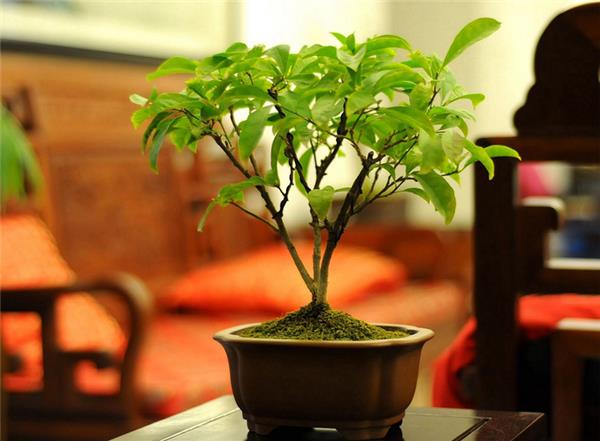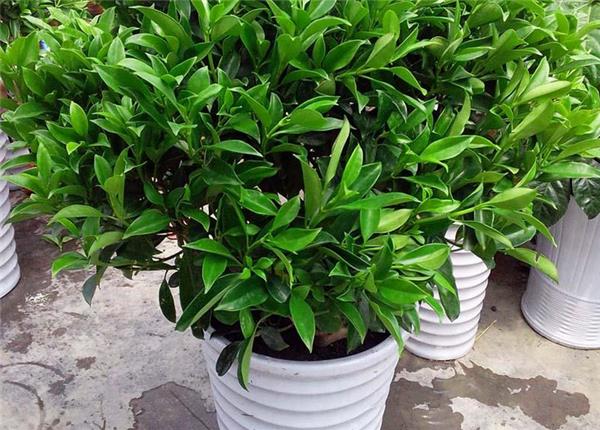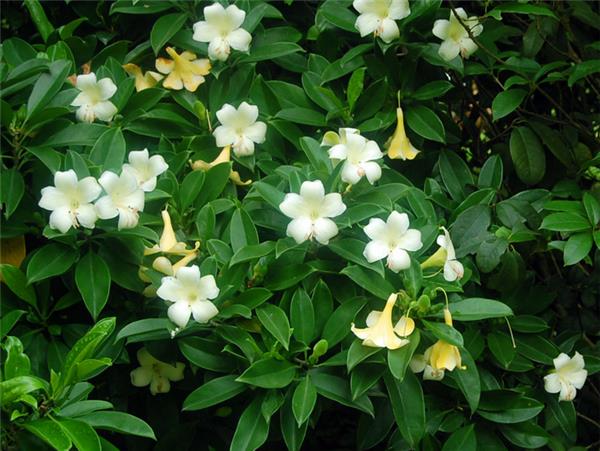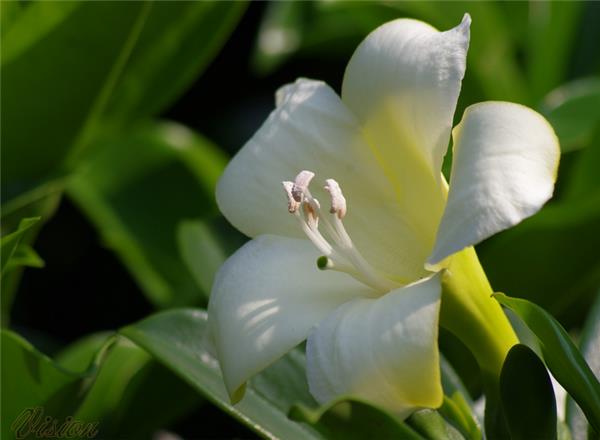Culture methods and matters needing attention of African jasmine
African jasmine has emerald green leaves, beautiful flowers, slightly fragrant flowers, and a long flowering period, which is very suitable for local decoration at home. Here are the breeding methods and matters needing attention of African jasmine.

Culture methods of African jasmine
African jasmine likes warmth and good sunshine, but it is required to avoid the strong direct sunlight in summer; it likes the environment with high air humidity and good ventilation, and is not resistant to cold, dry freezing and sharp drop in temperature; it grows best on loose, fertile loam with good drainage; it has strong sprouting and tillering ability, especially resistant to repeated pruning. Flowering in May and fruiting in October-December.
Temperature: African jasmine grows well in a warm climate, and the optimum growth temperature is 18-32 ℃. When the summer temperature is higher than 38 ℃, it will inhibit plant growth; some areas of South China can survive the winter in the open, while pot cultivation in the north of the Yangtze River requires that the greenhouse temperature in winter is not lower than 3-5 ℃.
Lighting: it is best to choose places with side shade in South China; potted plants in the north of the Yangtze River can receive full light in spring and autumn, and avoid direct sunlight before and after noon in summer; pay special attention to the sunny days after a long rain from June to July, and the light is very strong. Shade must be done to prevent tender leaves from being burned. Potted plants are required to have sufficient scattered light and should not be too dark, otherwise it will lead to leaf loss, yellowing or shedding.

Moisture: no matter on the ground or in the pot, sufficient water is required, but the roots must not accumulate water, otherwise they are easy to rot. Watering in spring and autumn to keep the basin soil moist; beware of stagnant water in plum rain season; in hot summer, spray water once in the morning and afternoon to humidify and cool down; for indoor potted plants in winter, it is appropriate to keep the pot soil slightly tide. and spray water to the leaves when the temperature is relatively high around noon.
Soil: planting in the southern region requires a loose, fertile, well-drained sandy loam. Potted plants in the north can be prepared with 7 parts of rotten leaf soil, 1 part of river sand, 1 part of retted organic fertilizer and 1 part of fermented sawdust. During the growing season, the potted plants were loosened once a month to keep their roots in a good state of penetration. In addition, the soil of potted plants can be changed every 1 to 2 years.
Fertilizer: potted plants apply thin mature cake fertilizer and water once a month in the growing season, and phosphorus and potassium fertilizer once before flowering in May to promote plant flowering; after autumn, topdressing phosphate and potassium fertilizer for 1 or 2 times to pass the winter safely. Potted plants in northern China, in order to prevent leaf yellowing, 0.2% ferrous sulfate was added during the growing season.

Precautions of African jasmine
African jasmine is a sun-loving tree species, not herbaceous plants, but a small Arbor family, so it is only necessary to pay attention to the light when it is domesticated, and proper light every day is one of the necessary factors to ensure its healthy growth.
The most difficult time of African jasmine in winter, if there is no good protection, it will lead to slow growth in the coming year. Especially in the north, indoor heat preservation is needed in winter to ensure that the growth environment is not less than 5-10 ℃.
African jasmine rarely gets sick after growing up, but there are many diseases during its growth, such as yellowing and blackening of leaves, or burns of young leaves due to too strong light. Therefore, in the growing period, the need for careful care, pests can be properly sprayed, mostly anthrax, symptoms of small black spots on the leaves, the emergence of gray-white situation. There is usually a special potion to buy. Burn generally take more watering, more shade way to improve.

Finally, let's take a look at how African jasmine loses its leaves.
African jasmine in breeding for a period of time, in fact, will find that its growth will stop, because some of the elements in the soil have been consumed, so at this time need to change pots, small pots are not suitable for root growth. However, if you do not change the basin in time, then the trace elements can not keep up, which will lead to the loss of the leaves or the yellowing of the leaves. So it is suggested that you can change the soil with you in 2 years or 1 year.
Many people like to water more in summer and feel that they can cool down. As a matter of fact, overwatered flowers will sound the growth of African jasmine. It is too much, causing the root to rot, the nutrient or water supply is not available, and the leaves fall off.
African jasmine, as a solar plant, adapts to a relatively high temperature, so it generally grows slowly in autumn and may wither in winter, so the leaves will gradually turn yellow and fall off, so heat preservation measures should be taken at this time.
African jasmine if released flowers, it is easy to cause disease and insect damage, insects on nutrients or leaf invasion, is the loss of its leaves, or withered, so the need for timely treatment, such as spraying and so on.
The general solution to falling leaves:
1. When sprouting in early spring, it is necessary to carry out drying treatment, and then cut off the leaves of the branches, and then gradually fertilize.
2. Put it in a cool and ventilated place and wait for the leaves to grow and shine on the sun.
3. Pay attention to the control of moisture and reasonable maintenance.
When there is no supply of nutrients or water, the leaves fall off.
African jasmine, as a solar plant, adapts to a relatively high temperature, so it generally grows slowly in autumn and may wither in winter, so the leaves will gradually turn yellow and fall off, so heat preservation measures should be taken at this time.
African jasmine if released flowers, it is easy to cause disease and insect damage, insects on nutrients or leaf invasion, is the loss of its leaves, or withered, so the need for timely treatment, such as spraying and so on.
The general solution to falling leaves:
1. When sprouting in early spring, it is necessary to carry out drying treatment, and then cut off the leaves of the branches, and then gradually fertilize.
2. Put it in a cool and ventilated place and wait for the leaves to grow and shine on the sun.
3. Pay attention to the control of moisture and reasonable maintenance.
Related
- Wuhan Hospital Iron Tree Blooming Result Was Instantly Frightened by the Gardener Master
- Which variety of camellia is the most fragrant and best? Which one do you like best?
- What is the small blue coat, the breeding methods and matters needing attention of the succulent plant
- Dormancy time and maintenance management of succulent plants during dormancy
- Minas succulent how to raise, Minas succulent plant pictures
- What are the varieties of winter succulent plants
- How to raise succulent plants in twelve rolls? let's take a look at some experience of breeding twelve rolls.
- Attention should be paid to water control for succulent plants during dormant period (winter and summer)
- Watering experience of twelve rolls of succulent plants
- Techniques for fertilizing succulent plants. An article will let you know how to fertilize succulent plants.



